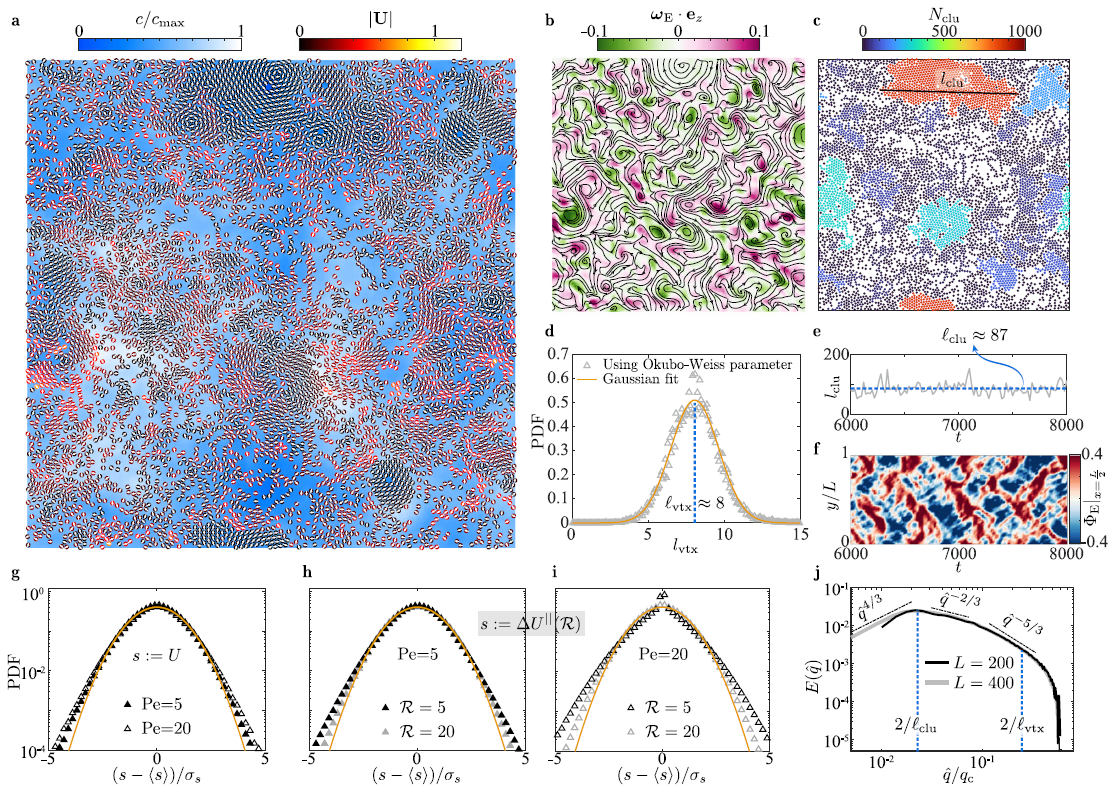Recently, Dr. Jiang Maoqiang, a young faculty member from the Department of Thermal Engineering at our School, in collaboration with Professor Zhu Lailai’s research group at the Department of Mechanical Engineering, National University of Singapore, has achieved significant progress in the field of multiphase fluid mechanics of active particles. The team developed a fully-resolved high-performance parallel computational method for systems of active matter particles, and for the first time demonstrated that medium activity can trigger solid-liquid-gas phase transitions and active turbulence, while also elucidating the underlying mechanisms. The findings, entitled “Shaping active matter from crystalline solids to active turbulence,” have been published in Nature Communications, a leading subsidiary journal of Nature. This also marks the first time the School has published in this journal as a co-first author.
Active matter refers to materials composed of self-propelled individuals commonly found in nature, ranging from microorganisms to well-known mammals. Physicists often refer to these individual units as active particles. Such particles are capable of converting free energy into mechanical energy to propel themselves, and through interactions with one another, they exhibit a wide variety of fascinating collective behaviors. Since the 20th century, the study of active matter has played a crucial role in enhancing our understanding of biological motility. At the same time, research on synthetic active particles—such as Janus particles and active droplets—is proving instrumental in the design of future biomimetic materials and systems. A key goal in designing such systems is to achieve the highest degree of controllability over active particles using the fewest possible control parameters, thereby enhancing the reconfigurability of active materials. Previous studies have shown that modulating particle activity can induce phase transitions in active matter or trigger laminar-turbulent transitions in active fluids. However, simultaneously achieving both has remained a challenge.
Addressing the challenges mentioned above, we have developed a fully resolved numerical simulation method for multiphase flows that enables large-scale modeling of active particle collectives. This approach integrates the lattice Boltzmann method, the immersed boundary method, and high-performance parallel computing. By accounting for both hydrodynamic and chemical interactions among isotropic active droplets—termed isotropic phoretic agents (IPAs)—our model not only reproduces typical collective behaviors of IPAs observed experimentally, but also captures seemingly disparate phenomena, namely active crystals and active turbulence, as illustrated in Figure 1. We demonstrate that these emergent collective behaviors cannot be achieved by solving only the hydrodynamic or chemical interactions in isolation. Furthermore, through dimensional analysis, we derived a theoretical framework describing the phase transition from solid to liquid (or gas) states. We identified that this transition is driven by the emergence of topological defects. Between the solid and liquid phases, we also confirmed the existence of a hexatic phase, consistent with the Kosterlitz–Thouless–Halperin–Nelson–Young (KTHNY) theory, recognized by the 2016 Nobel Prize in Physics. These findings suggest that modulating particle activity can mimic the role of temperature in conventional media, offering a new pathway to control phase behavior in active matter systems.

Figure 1. Solid–liquid–gas phase transition in active matter collective driven by activity
In addition to mimicking temperature, we also discovered that increasing particle activity can produce effects analogous to raising the Reynolds number in classical fluids. The phase behavior of the active fluid progresses from a stationary laminar state to regular waves, then to wave instability, and finally transitions into active turbulence. This active turbulence is characterized by the formation of inherent vortex structures at the particle scale, as shown in Figure 2. This advancement highlights both similarities and differences between active and classical fluids in the transition from laminar to turbulent flow: lower activity promotes crystallization, while higher activity triggers turbulence. Ultimately, this discovery provides a new paradigm for optimizing active particle systems with minimal control in active matter research.

Figure 2. Vortex structures and flow patterns in active turbulence
The first author of the paper is Dr. Yang Qianhong from the National University of Singapore. Dr. Jiang Maoqiang from our school served as a co-first author, and the corresponding author is Professor Zhu Lailai, also from the National University of Singapore. Collaborators additionally include Professor Picano Francesco from the University of Padua, Italy.
Reference:Yang, Q., Jiang, M., Picano, F. et al. Shaping active matter from crystalline solids to active turbulence. Nature Communications, 2024, 15: 2874. https://doi.org/10.1038/s41467-024-46520-4
Dr. Jiang Maoqiang joined the Institute of Energy Engineering at the School of Naval Architecture, Ocean and Energy Power Engineering in 2023. He has long been engaged in research on multiphase fluid mechanics and computational fluid dynamics, with extensive work focused on numerical methods for multiphase reactive flows, high-performance computing, and the utilization of low- and zero-carbon fuels. His research results have been published in high-impact academic journals such as Nature Communications, Journal of Computational Physics, and Physics of Fluids. He has also applied for and obtained multiple patents and software copyrights.